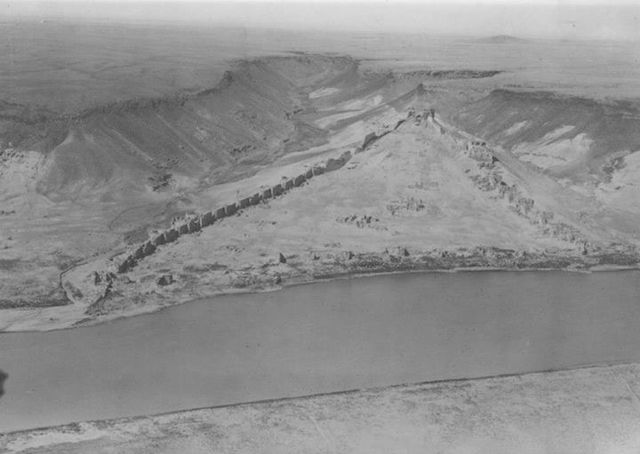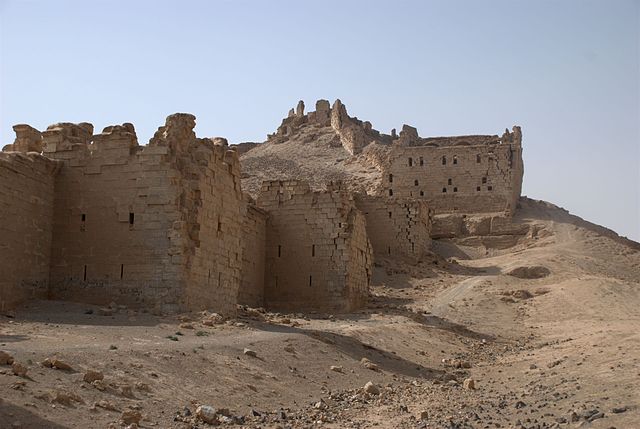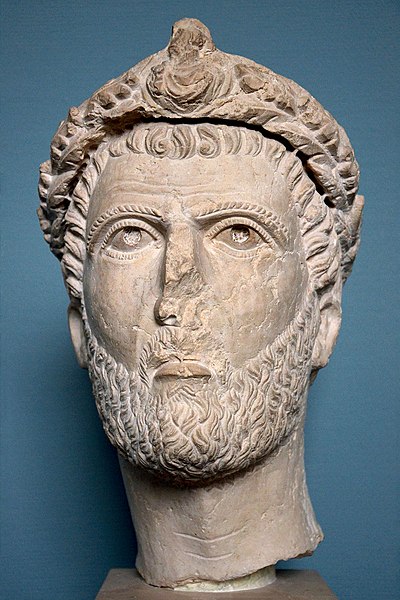Halabiye is an archaeological site on the right bank of the Euphrates River in Deir ez-Zor Governorate, Syria. It was an ancient city and former bishopric known as Zenobia and a Latin Catholic titular see.
Aerial photo of Halabiye with the Euphrates visible in the lower part of the image
Outer façade of the northern city wall, looking west toward the Praetorium and the citadel.
Inside the Praetorium
View of wall and Euphrates.
Septimia Zenobia was a third-century queen of the Palmyrene Empire in Syria. Many legends surround her ancestry; she was probably not a commoner and she married the ruler of the city, Odaenathus. Her husband became king in 260, elevating Palmyra to supreme power in the Near East by defeating the Sasanian Empire of Persia and stabilizing the Roman East. After Odaenathus' assassination, Zenobia became the regent of her son Vaballathus and held de facto power throughout his reign.
Inscription at Palmyra honoring Julius Aurelius Zenobius, believed by some to be Zenobia's father
Odaenathus, a bust dated to the 250s
Vaballathus, Zenobia's son and successor of his father Odaenathus (on the obverse of an antoninianus, AD 272)
The citadel of Halabiye, renamed "Zenobia" after its renovation by the queen







